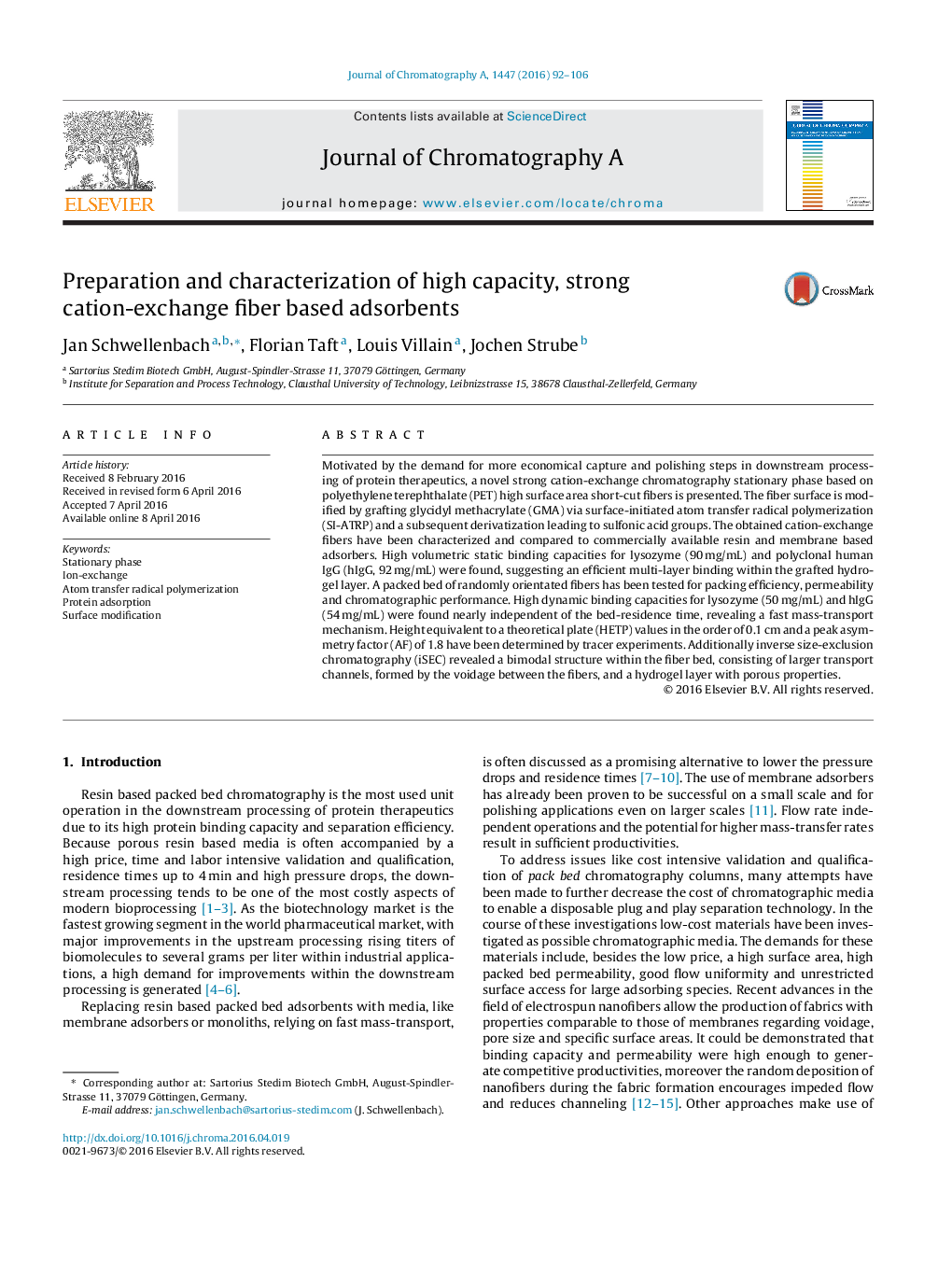| Article ID | Journal | Published Year | Pages | File Type |
|---|---|---|---|---|
| 1200262 | Journal of Chromatography A | 2016 | 15 Pages |
•Novel fiber based cation-exchange adsorbers have been produced by SI-ATRP.•Favorable hydrogel and packed bed structures could be generated.•High volumetric binding capacities (>90 mg/mL) have been found for hIgG.•High dynamic binding capacities were found at bed residence times <10 s.
Motivated by the demand for more economical capture and polishing steps in downstream processing of protein therapeutics, a novel strong cation-exchange chromatography stationary phase based on polyethylene terephthalate (PET) high surface area short-cut fibers is presented. The fiber surface is modified by grafting glycidyl methacrylate (GMA) via surface-initiated atom transfer radical polymerization (SI-ATRP) and a subsequent derivatization leading to sulfonic acid groups. The obtained cation-exchange fibers have been characterized and compared to commercially available resin and membrane based adsorbers. High volumetric static binding capacities for lysozyme (90 mg/mL) and polyclonal human IgG (hIgG, 92 mg/mL) were found, suggesting an efficient multi-layer binding within the grafted hydrogel layer. A packed bed of randomly orientated fibers has been tested for packing efficiency, permeability and chromatographic performance. High dynamic binding capacities for lysozyme (50 mg/mL) and hIgG (54 mg/mL) were found nearly independent of the bed-residence time, revealing a fast mass-transport mechanism. Height equivalent to a theoretical plate (HETP) values in the order of 0.1 cm and a peak asymmetry factor (AF) of 1.8 have been determined by tracer experiments. Additionally inverse size-exclusion chromatography (iSEC) revealed a bimodal structure within the fiber bed, consisting of larger transport channels, formed by the voidage between the fibers, and a hydrogel layer with porous properties.
